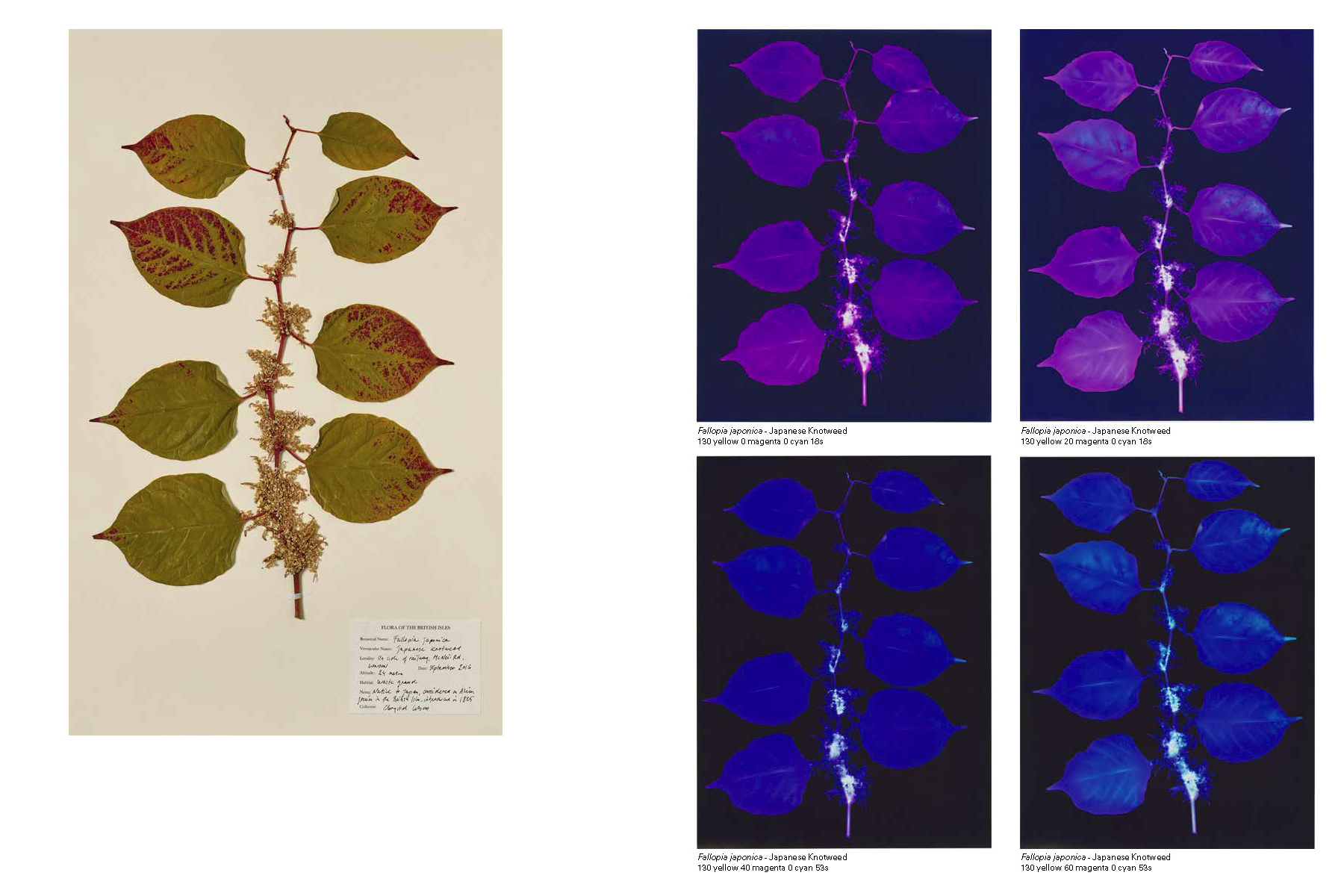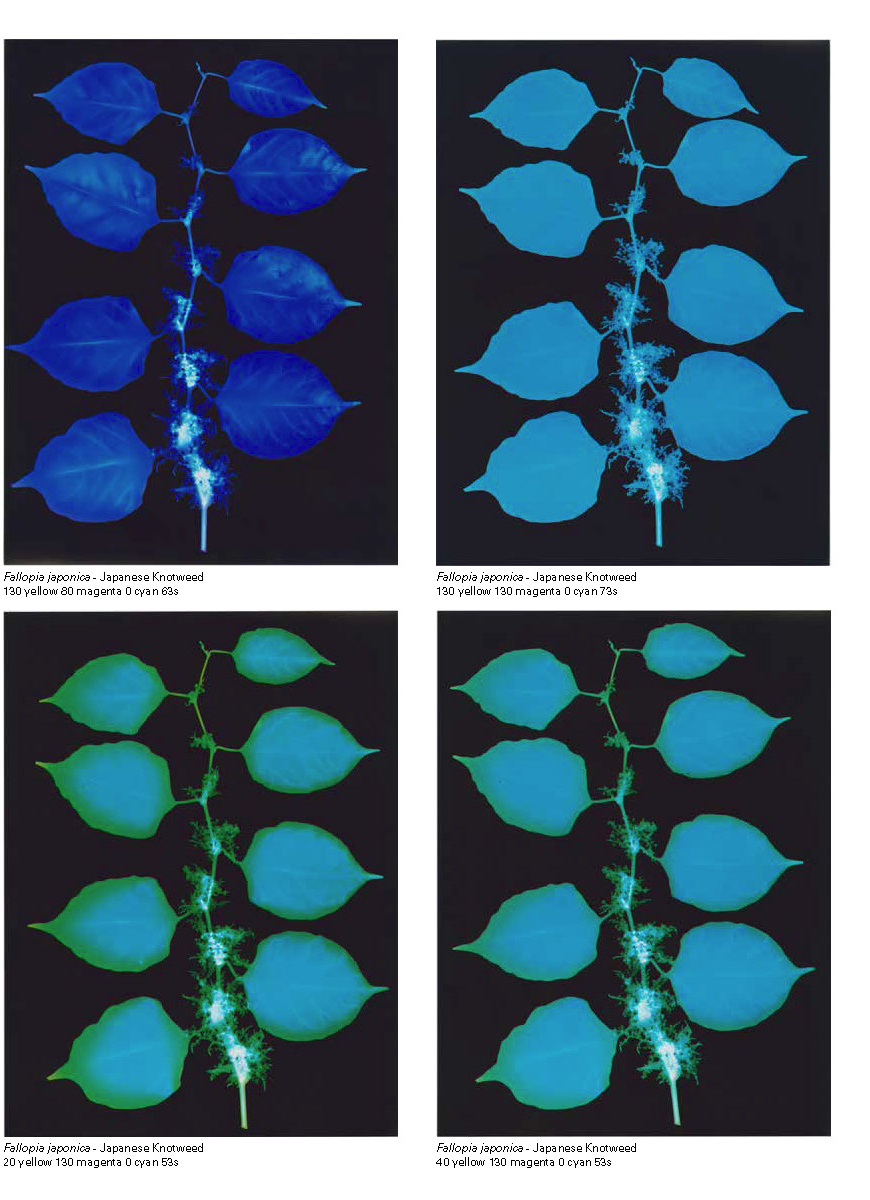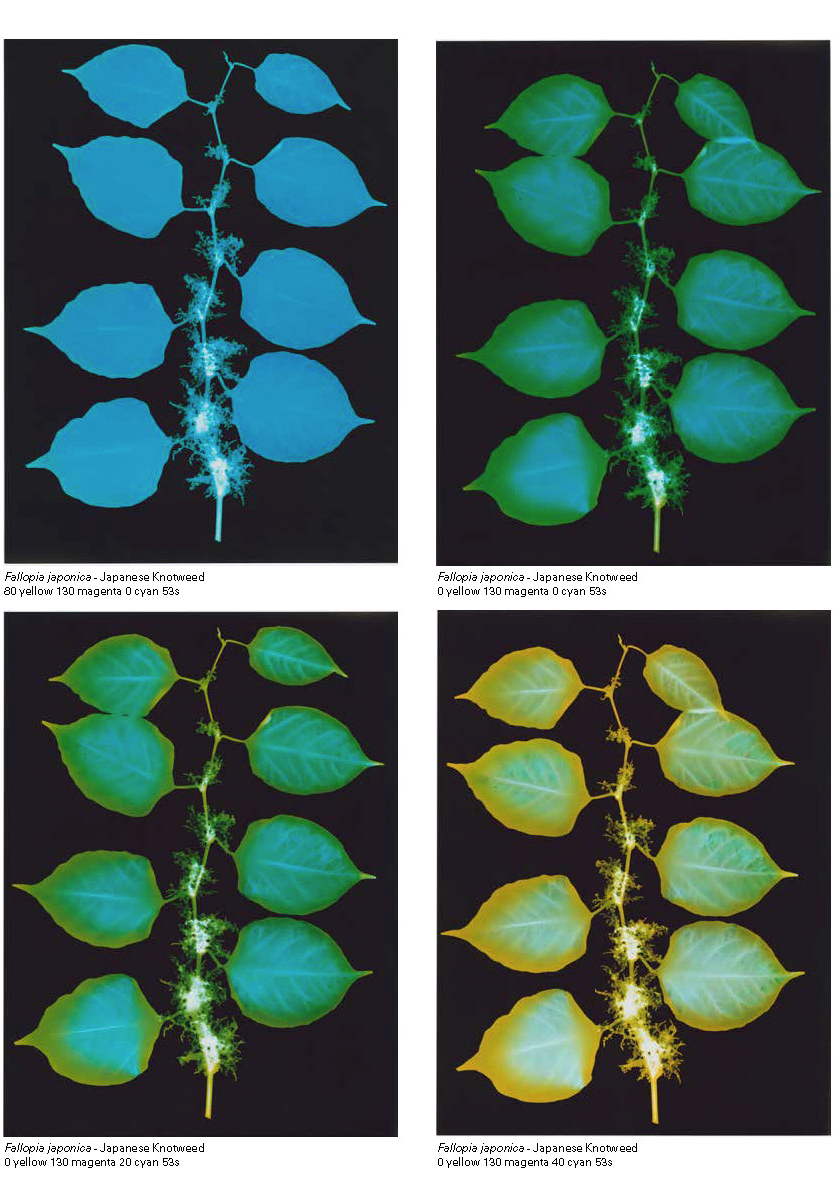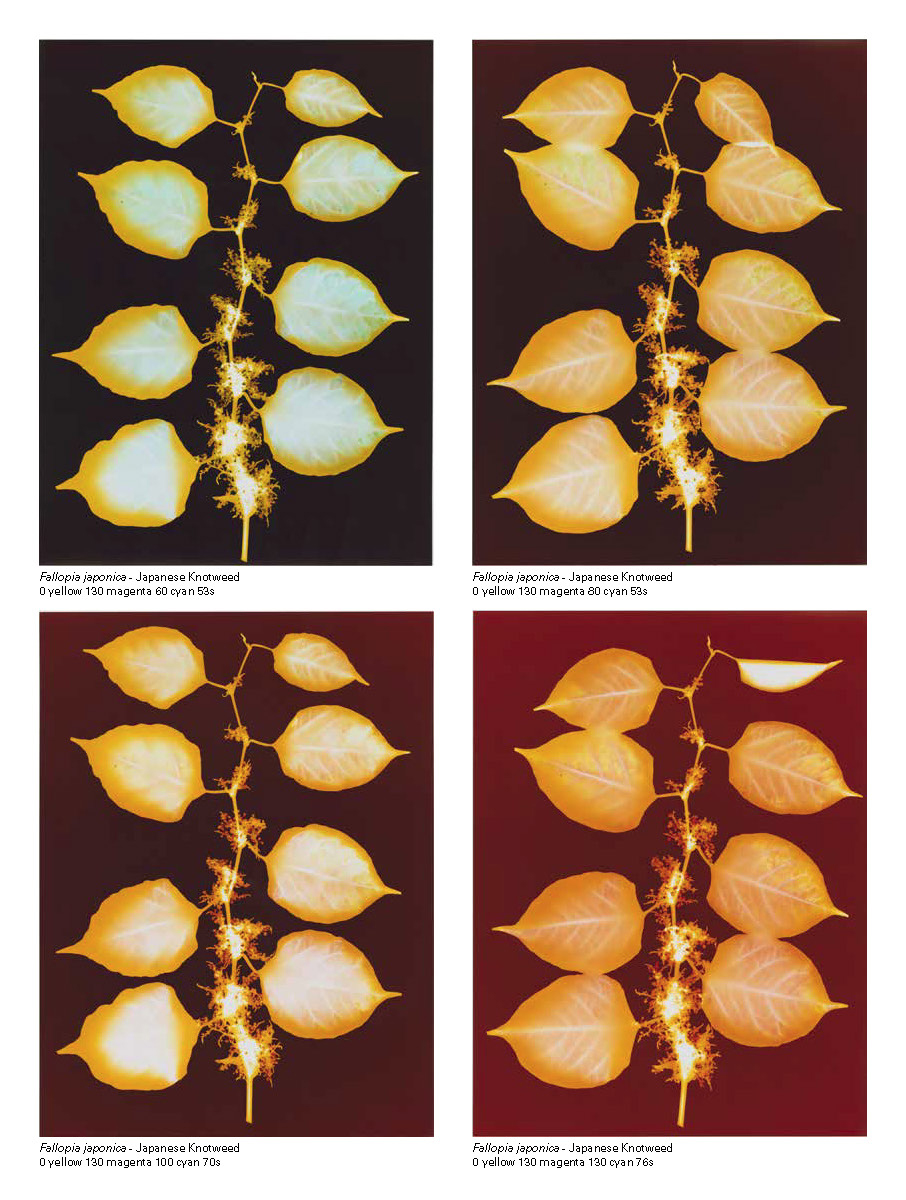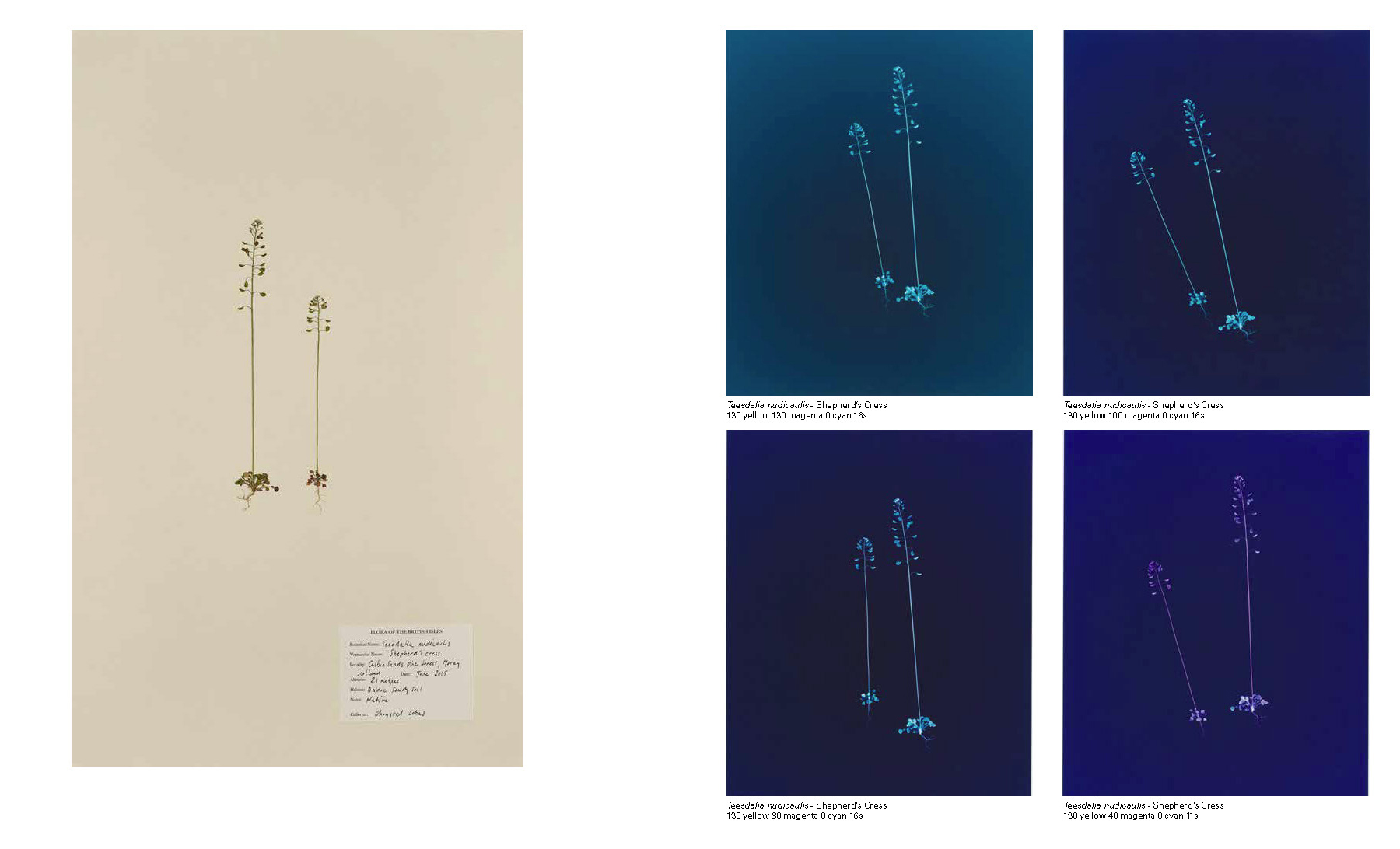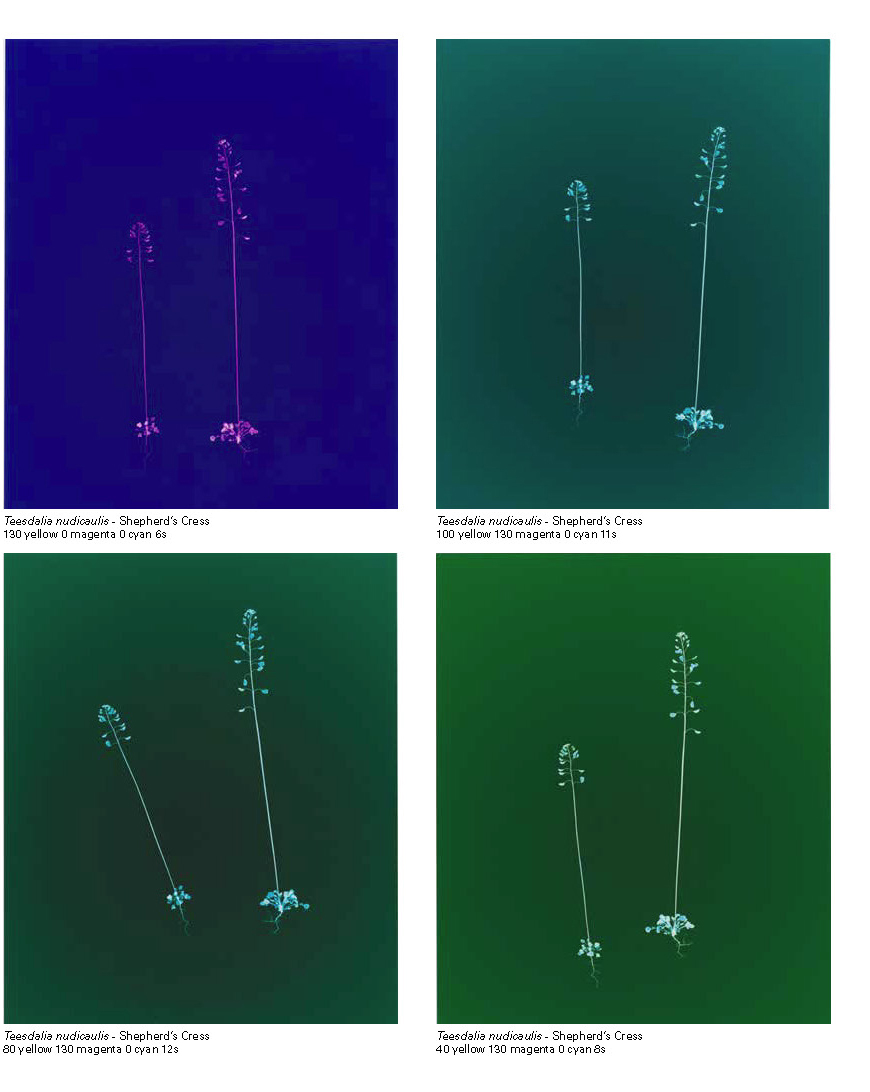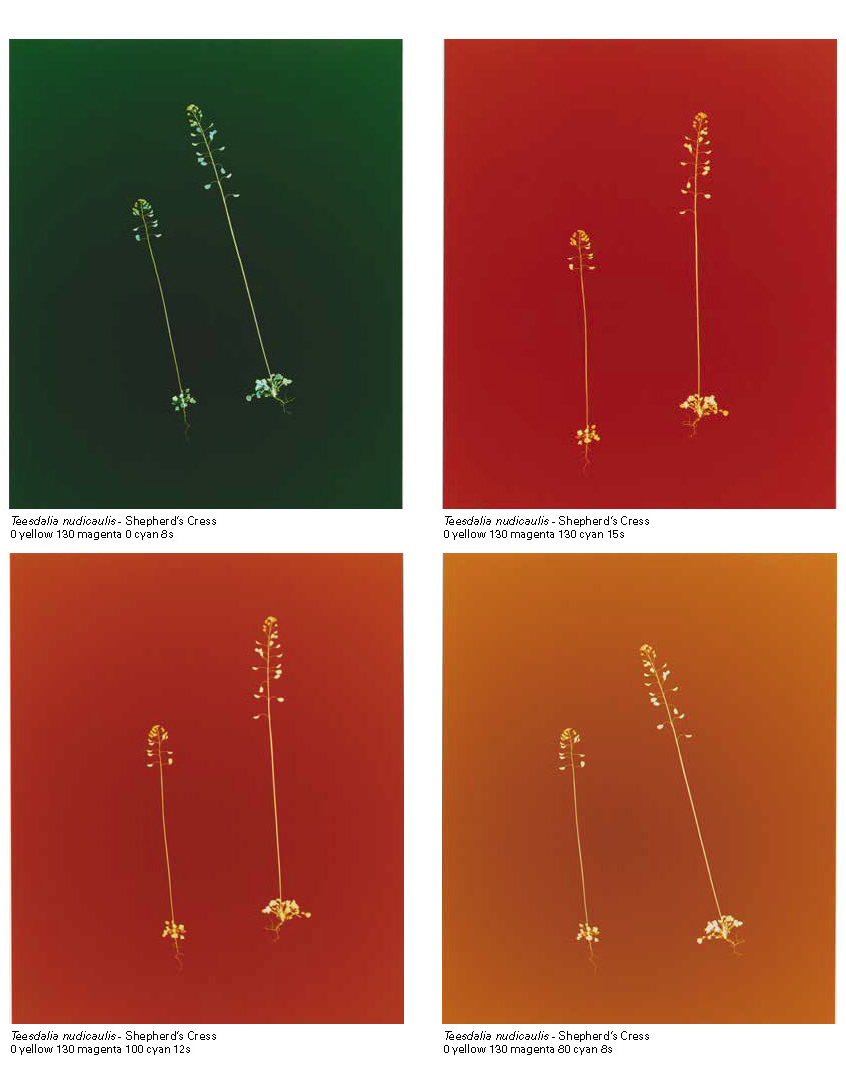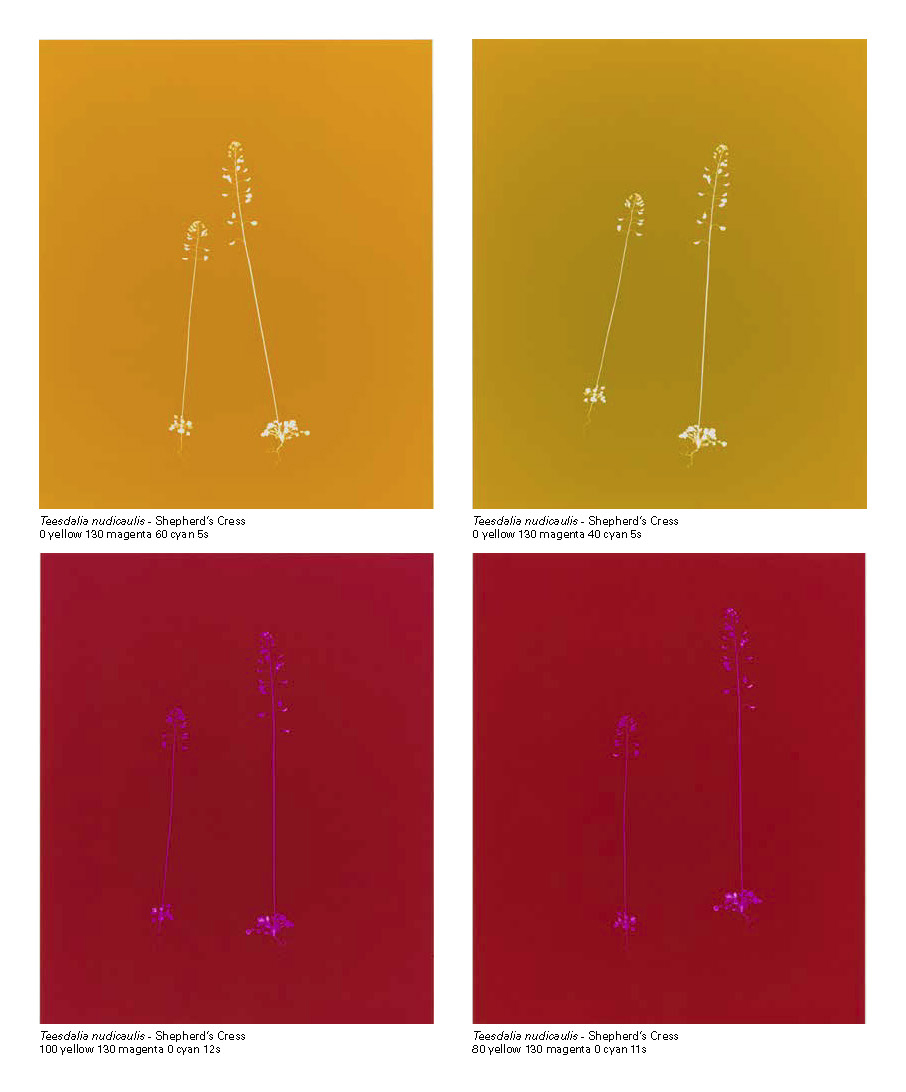| |
Plant Portraits or Weeds & Aliens Studies, 2013-
‘We can in fact only define a weed, mutatis mutandis, in terms of the
well-known definition of dirt as matter out of place.
What we call a weed
is in fact merely a plant growing where we do not want it.’ Edward James Salisbury (1935), The
Living Garden
Drawing from Salisbury’s approach to documenting species by
uprooting them and placing them directly onto paper or a sheet of fabric
to photograph them, I placed each plant directly onto colour photographic paper in the darkroom under the enlarger light.
Progressively changing the cyan, magenta or yellow filtration on the enlarger, each colour changes the way the plant emanates from the paper’s
surface. The filtration values and exposure times are carefully annotated beneath each photogram. Some of the chosen plants, for example Fallopia
japonica (commonly known as Japanese Knotweed), are part of the species that Salisbury researched extensively and described in his book, Weeds and
Aliens.
As Charles Warren explains: ‘For most of history the only criterion by which human beings judged other species was their usefulness but,
in recent centuries, other dimensions became important so that certain species came to be valued for their attractiveness, their novelty or their
potential for game sport.’ Charles Warren(2009), Managing Scotland’s Environment |
|
|
|
|
